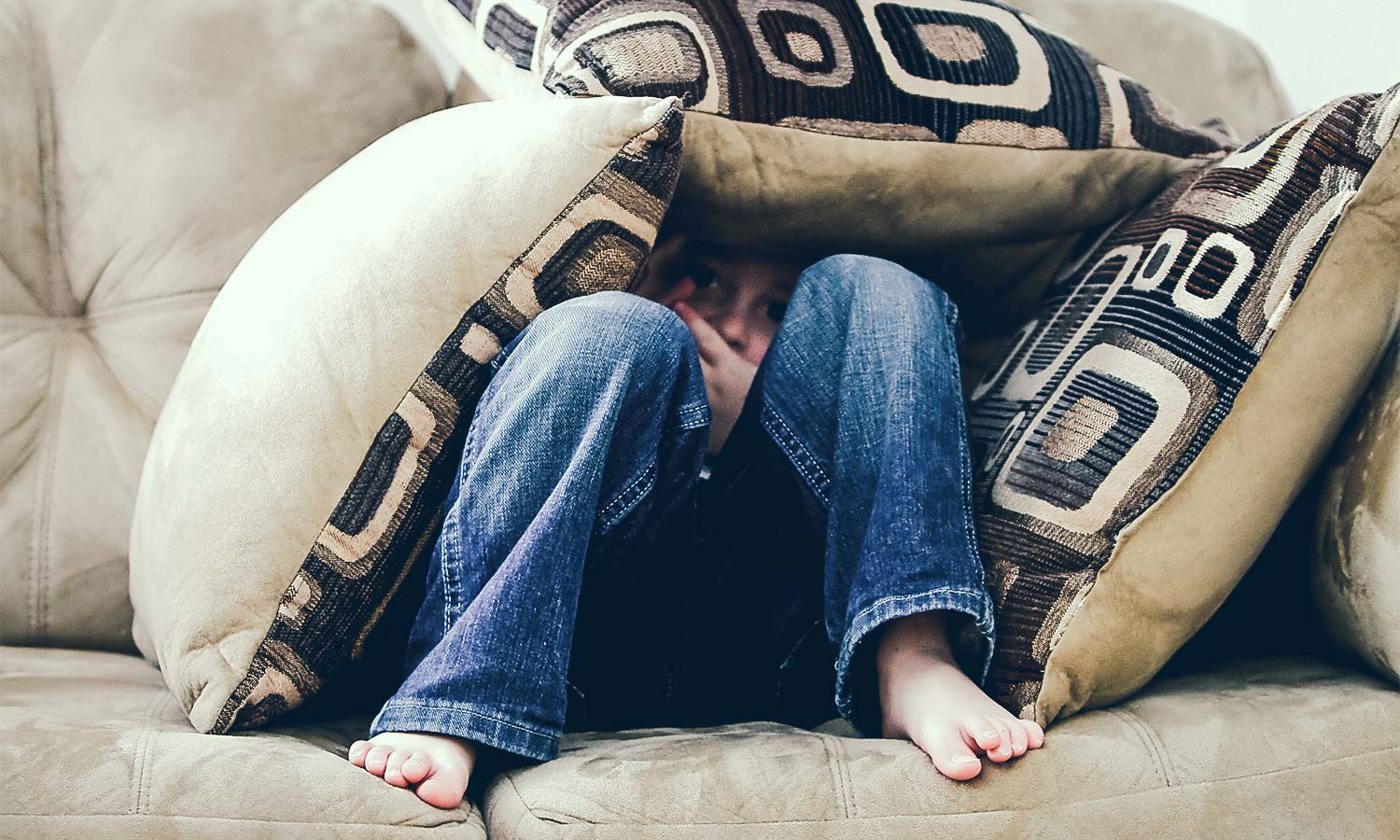Like what you see?
Sign up to receive more free parenting advice.
Thank you for subscribing to our newsletter!
Child Development

We are all a little fearful of something. It's part of our biological make up and our psychological settings.
Specific phobias occur in about 5% of children and approximately 15% of children are referred to specialists for anxiety-related problems .
But when does fear turn into a phobia and, in kids, when is it something to worry about?
A phobia is an excessive or unreasonable and persistent fear. Common phobias include fear of animals, insects, blood, heights, closed spaces, or flying. In children the identified fear must last at least six months to be considered a phobia rather than a temporary fear.
Some of the more common phobias seen in children include something related to an object or situation that causes extreme anxiety; panic disorder; agoraphobia (fear of open spaces); social anxiety disorder (fear of social situations); separation anxiety disorder (fear of being separated from an attachment figure); selective mutism (inability to speak in social situations).
"The reason fears can become phobias more readily in children, is because they don't have the same ability to rationalise and contextualise as adults do," Dr Michael Nagel says.
Fearful children
The University of the Sunshine Coast Associate Professor of child development and educational psychology says while fears were a perfectly natural part of being a child – and of life in general – some children could be more fearful than others.
"Fears are highly personal and manifest for a number of different reasons,” Dr Nagel says.
"And the fears – and phobias in particular – will come from an event or occurrence."
Colleague Rachael Sharman, Senior Lecturer in Psychology, agrees.
"Kids all pop out differently and some of them have a greater propensity to anxiety and fears," Dr Sharman says.
"It's usually a reactive memory to a trigger.
"In an evolution sense, though, they are a preparedness for those things in the environment that can kill us.
"Think of it as an inbuilt radar for harm."
Dr Nagel says while there were still more questions than answers in the study and research of fears and phobias, there were some simple and effective steps parents could take to comfort their child when they were frightened, along with some effective communication tools.
Always err on the side of caution and spend the time allaying the fears and making sure your child feels safe and secure.Dr Michael Nagel
First though, what not to do.
Although Dr Sharman maintains the only way to cure a fear or phobia is to be exposed – to relearn how to react to the stimulus or situation – this is not recommended for younger children and in older children or adults it needs to be done gently within safe boundaries.
"If it's handled poorly it can make the fear or phobia worse," she says.
"I cannot imagine anything worse than taking a child to face something that terrifies them," Dr Nagel says.
"Always err on the side of caution and spend the time allaying the fears and making sure your child feels safe and secure."
To help your child in the midst of their fear:
- Demonstrate to your child that you are removing what they are afraid of and taking the fear seriously.
- Reassure your child they are safe and there is nothing for them to fear.
- Speak calmly, cuddle them and show the threat is gone.
Don't try to speak to them about their fear or what causes it then and there. Wait for a quiet, calm moment – when the threat has passed – to sit down and chat to them about it in a rational, matter-of-fact manner about the fear and how they feel.
Dr Nagel says when a child is in the midst of an episode of stress or anxiety – be it because of a fear or any other situation – cortisol levels spike and prohibit the child from thinking clearly.
"Cortisol is a hormone which increases in the brain at times of stress. Whether it is a child or an adult, this hormone will actually shut down thinking.
"This is why it is so difficult to speak to a child – or anyone – when they are under such a high level of stress.
"So, waiting for a child to calm down, feel safe and subsequently have their cortisol levels drop, is very important before trying to communicate to them or ask them questions about their feelings and reaction."
As Dr Nagel says, fears are a natural and normal part of life.
But managing them and giving your child the comfort they need when they need it is an important step in protecting and helping them.
Get Advice
Real parents. Real problems. We’re here with a group of leading early learning and parenting professionals to answer your questions.




